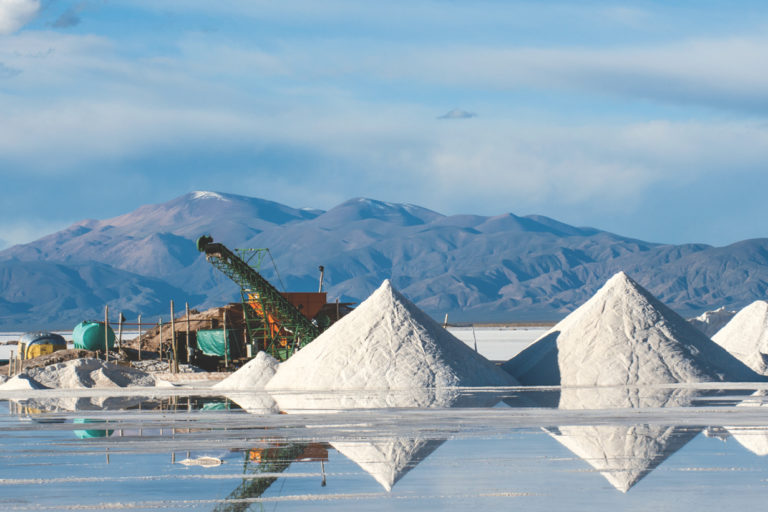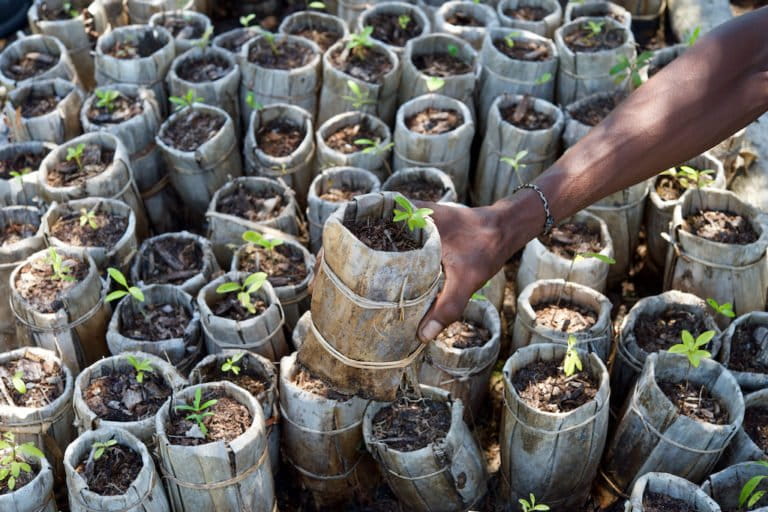We’ve been largely flying blind when it comes to fishing, shipping and energy production intel on our oceans, according to a new study that combines artificial intelligence with satellite technology.…
Conservation technology company Conservation X Labs and nonprofit Wild Me have announced they are merging in a bid to ramp up the role of artificial intelligence in biodiversity protection. With…
A new platform allows companies and landowners to monitor the ecosystems in their supply chains, as governments around the world increasingly consider regulations that require businesses to account for biodiversity.…
Wildlife conservation actions tend to be focused in specific locations because the data that inform them also tend to be highly localized. But what if we could visualize where a…
We live at the center of a spiderweb of global mining supply chains. The vehicle that took you to the market, the rechargeable battery in your headphones, and the phone…
Unstudied at sea until recently, this huge, fast-moving ocean current may hold a key to resolving climate change uncertainties. But doing remote research in southern oceans poses financial, data gathering, and unexpected challenges.
Healthy coral reefs, with their brightly colored corals and bustling schools of fish, are easy to spot underwater. New research into the marine soundscapes of reefs in the Sangkarang Archipelago…
This past June, scientists and researchers gathered outside the office of INPE, Brazil’s National Institute of Space Research, in the municipality of São José dos Campos. They were there to…
At the start of each year, southern elephant seals living on Kerguelen Island above Antarctica shed the thick mat of their winter fur, while growing in a fresh layer of…
Under threat since 2020, the 20-year satellite monitoring program for deforestation in Brazil’s Cerrado savanna, a global biodiversity hotspot, may end in April due to lack of funding. "Part of…
With about 80% of its forests still untouched, Acre is one of Brazil’s least-deforested Amazonian states. Bordered by Peru on the west, it represents just 1.7% of Brazil’s huge land…
Nestled on the ocean floor in Southeast Asia are five sensor-filled boxes that will reveal the future of coral reefs. For the past year, from their secret location, the Bluboxx…
We are in a moment of heightened attention and momentum around reforestation and forest restoration. In particular, tree planting is in vogue, bolstered by pop celebrity billionaires and large initiatives…
CROSS RIVER NATIONAL PARK, Nigeria — It wasn’t supposed to be this straightforward. For days, we’d crisscrossed rainforest-blanketed mountains, hacked through thorny thickets and corkscrewing lianas, narrowly escaped rockfalls, and…
BEIRUT, Lebanon — Beaches across the planet emptied as COVID-19 spread in 2020, with the first full lockdowns in many places coinciding with sea turtle nesting season. With less noise,…
An assessment in 2019 by shark experts identified the little-known family of wedgefishes as among the most threatened marine fish families worldwide. This prompted researchers to roll out a first-of-its-kind…
In recent years, new and emerging technologies have revolutionized conservation work. At the forefront of this transformation is EarthRanger, a protected-area management software that was developed by Vulcan Inc. in…
The Brazilian Cerrado savanna, a global biodiversity hotspot that has already lost half of its area to crops and cattle, is at risk of no longer being monitored for deforestation…
With all of the environmental problems in the world, it can be easy to forget that there are also many solutions. Across the globe, people are working to restore nature,…
It started in October 2017. A swarm of microscopic algae called Karenia brevis amassed in the waters off Florida’s southwest coast, turning the ocean a rust-red hue. The algae, which…
JAKARTA — An Indonesian court has upheld a landmark 2017 ruling that all plantation data and maps in the country must be made publicly available — a ruling that the…
Planting trees is all the rage right now — billionaires from Elon Musk to Marc Benioff are touting the benefits of massive reforestation — but it's hard to identify legitimate…
Mongabay caught up with Igarapé Institute co-founder Robert Muggah this week to discuss Ecocrime, a new data visualization platform that combines visual storytelling with access to raw data on environmental crime…
In a newly released map, the coastal waters of the eight main Hawaiian islands are alight with color. Blue, turquoise, green, yellow, orange and red tinge the islands’ perimeters, each…
In late June, a fleet of about 300 Chinese fishing vessels swarmed around the rich, biodiverse waters of the Galápagos Islands, armed with overhead lights and industrial jigging machines to…
In his previous life, Matt Hill worked on Wall Street as a quantitative analyst (a.k.a. a “quant”) for stock portfolios worth billions of dollars. Now, at the helm of a…
New satellite data shows major tree loss, while Brazil’s VP cherry picks the findings, according to experts. Meanwhile, the environment minister appears to welcome illegal miners’ demands for less enforcement.
This week, Greenpeace International released a series of dramatic photos revealing megafires burning in the Krasnoyarsk region of Siberia, Russia. The images, captured on July 16 by drone, show red…
Habitat loss and climate change are often blamed for the decreasing numbers of migratory shorebirds in a major flyway in the Asia-Pacific region in recent years. But it might be…
Tech giant Microsoft says it will go “carbon negative” by 2030; to get there, it will rely on Pachama, a startup using LIDAR and artificial intelligence to truthfully track forest carbon storage projects.

























































